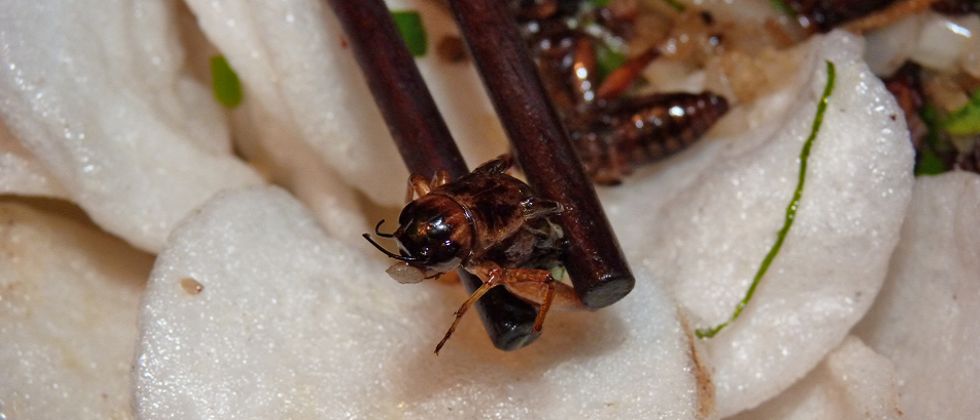California Management Review
California Management Review is a premier academic management journal published at UC Berkeley
by Elle Mahdavi

As the world population is only projected to increase in the coming years, the possibility of ending world hunger will seem even more daunting. Even if we are able to increase food security, it will be at the cost of the environment. Raising livestock significantly increases carbon footprint contributing to climate change—which will only cause more droughts and seasonal variabilities that will negatively impact food security again. This negative spiral could be ours if we don’t change how we approach our environment. We can do that through using alternative fuels, adopting more eco-friendly practices, and by changing our diets towards more sustainable foods—like, insects.
In a time where meat consumption is contributing to climate change and where soy/grain alternatives are exhausting water supplies, eating insects shows to be incredibly sustainable. Compared to traditional livestock, consumable insects require much less land and water for harvesting. As well, insects are arguably the most efficient at converting their food consumption to protein. Crickets, for example, have three times the amount of protein per gram than beef and twice the amount than chicken. Twelve grams of cricket flour doesn’t even contain one gram of carbohydrates and only contains two grams of fat. It’s also incredibly rich in iron, calcium, and vitamins.
People with dietary restrictions also benefit from insect-based foods. Cricket flour, which could be used interchangeably in recipes with whole-grain flour, is perfect for those who are gluten intolerant. Some vegetarians consider consuming insects than consuming traditional animal products because of the smaller environmental footprint and the more humane manner of killing. It’s a similar to the exception that certain vegetarians make with seafood. In fact, many compare the introduction of edible insects to western diets as the same as that of sushi, which apparently took about 35 years to be embraced.
Insects are regularly consumed in parts of Latin America, Africa, and Asia where they are generally larger and also found in larger quantities. Thirty-six African countries regularly consume insects, as do twenty-nine Asian countries. Western cultures traditionally haven’t had insects in their diets, but they have opened up in recent years. Though unlikely that grilled Amazonian grub will hit the U.S. markets next year, there are already a number of companies selling cricket flour, chips, and other insect-based products. These companies are focusing on selling edible goods that incorporate insects without indicating any remnant of the insect in the food. Since eating insects is relatively new concept to Western eaters, the thought is to discreetly introduce bugs into snacks.
“Thirty-six African countries regularly consume insects, as do twenty-nine Asian countries. Western cultures traditionally haven’t had insects in their diets, but they have opened up in recent years.”
Noma, a two Michelin star restaurant from Copenhagen, is committed to experimenting with insects in their kitchen to develop innovative and delicious dishes. In the past, crickets, mealworms, ants, and bee larvae have all been used as ingredients. Noma does not try to hide the fact they’re using insects; the bugs contribute to the presentation!

Beef tartare with ants at Noma
Flickr
The market for insect foods is growing as people are becoming more health and environmentally conscious. What sparked much of this bug craze was a United Nations Food and Agriculture Organization report in 2013 6, which suggested that eating insects may be the solution to world hunger and sustainable agriculture. Adopting innovative, healthy lifestyles that treat the environment well has become trendy, especially when Michelin star restaurants blaze the trail. Whether eating insects becomes like eating sushi to Westerners, at the very least, the trend seems to be emerging as a fad diet.
Although some people are grossed out by the thought of eating insects, the truth is we are already consuming insects without knowing it. The Food and Drug Administration has set Food Defect Action Levels which legally allows a certain amount of unavoidable and harmless insect matter, among other things, in foods. Since insects pose no harm when they’re in our foods unintentionally, given all the health and environmental benefits, we might as well eat them intentionally!